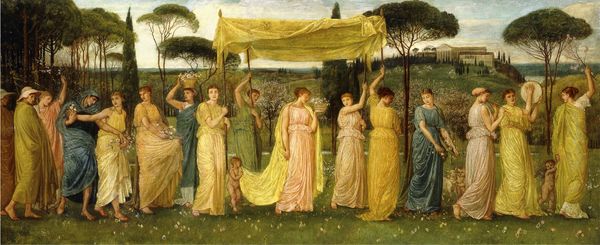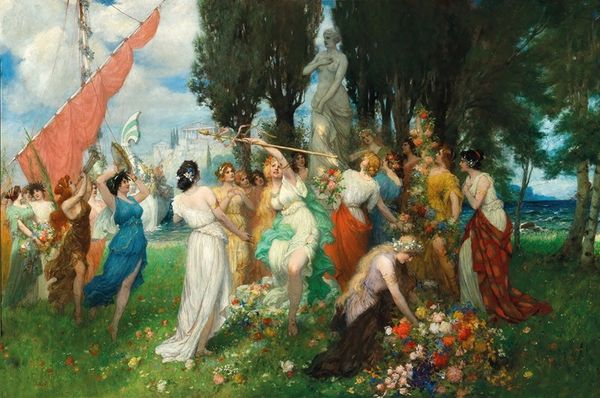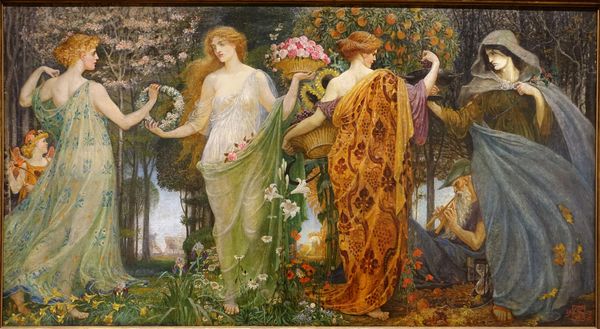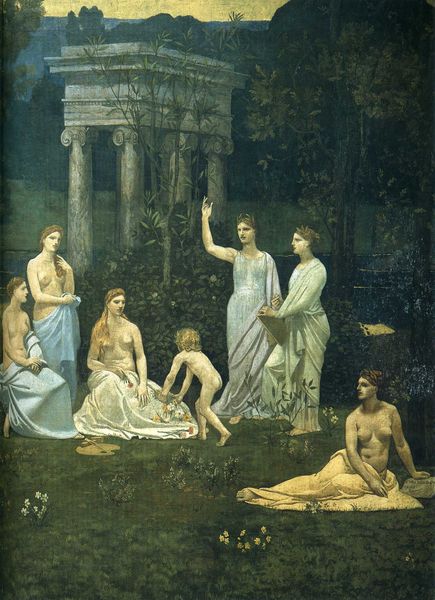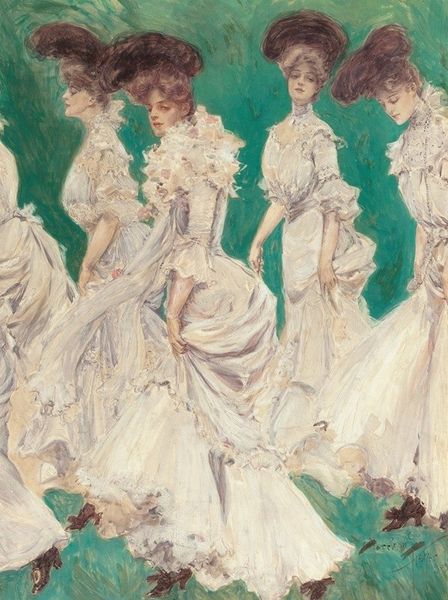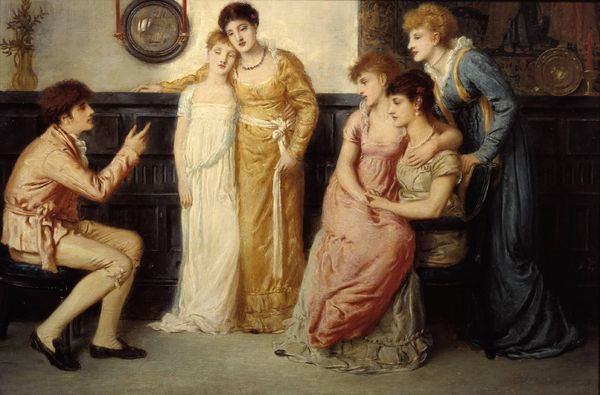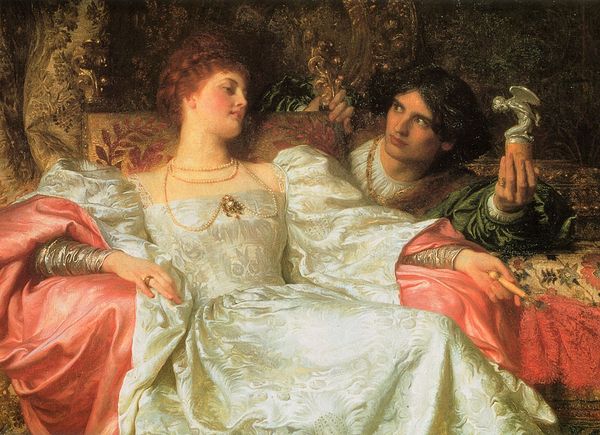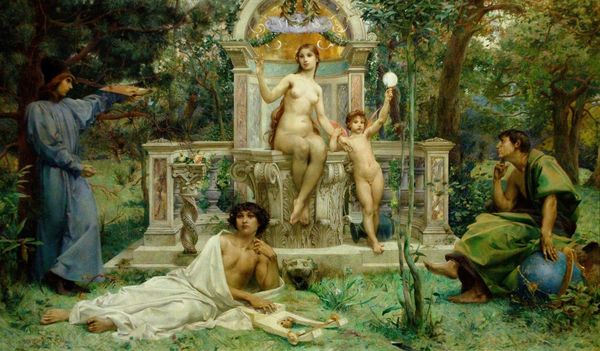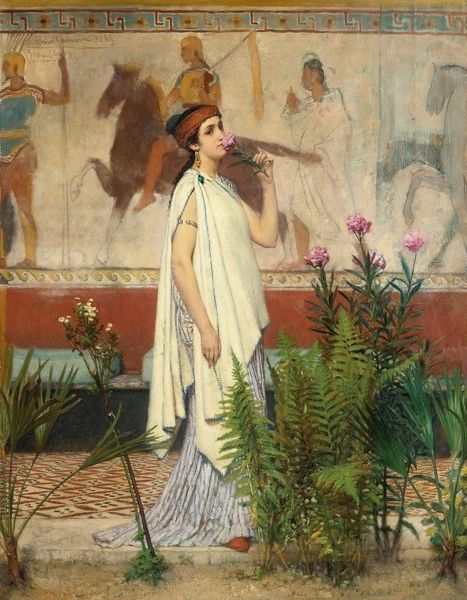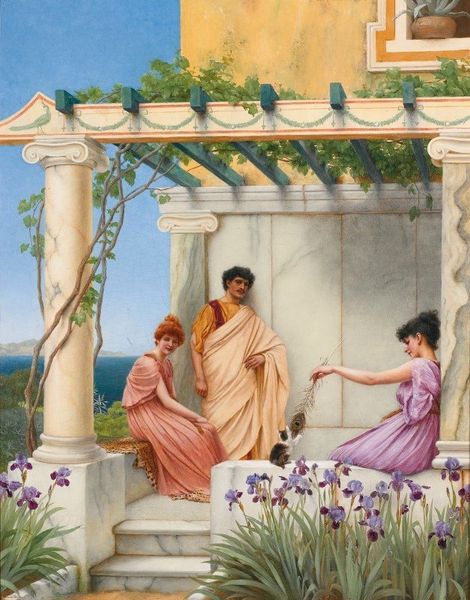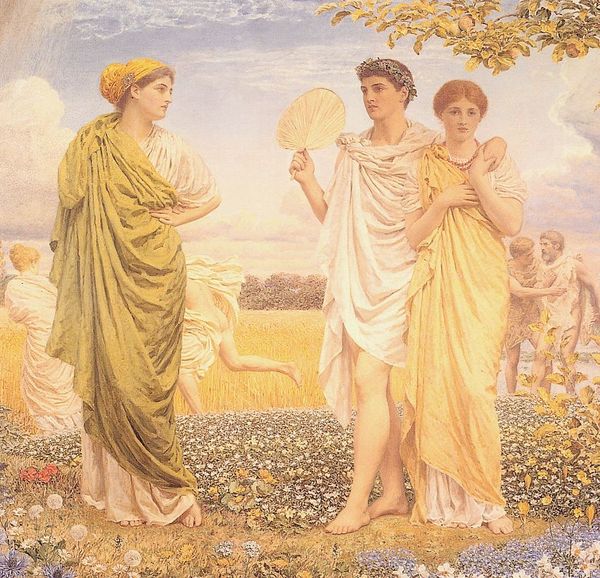
painting, oil-paint
#
gouache
#
allegory
#
painting
#
oil-paint
#
landscape
#
classical-realism
#
figuration
#
oil painting
#
genre-painting
#
history-painting
#
academic-art
#
watercolor
Copyright: Public domain
Editor: So, this is Francis Davis Millet's "Thesmophoria" from 1897, done in oil paint. I am immediately struck by the contrast between the stark white robes of the women and the natural tones of the landscape. What can you tell me about this work? Curator: What stands out to me are the ways in which Millet uses classical subject matter, but through the lens of late 19th-century artistic production. Think about the sourcing of pigments for those 'stark white' robes you mentioned – the labour involved, the access to global trade routes. How does that impact your reading of this 'classical' scene? Editor: I hadn't considered that at all. So the purity of the white, instead of being simply aesthetic, speaks to economic and colonial structures of the time? Curator: Precisely. And look closer at the composition. Millet isn't depicting some idealized past. He is staging it, much like a theatrical production. Consider the social status of the models, and how the creation of the painting relied on a certain economic relationship between artist and model. Where does that position the work within late 19th century society? Editor: That's fascinating. So, by looking at the material and social conditions of its creation, we can understand "Thesmophoria" not just as a historical painting, but as a commentary on Millet's own time? Curator: Exactly. By focusing on the materials, labor, and social context involved in its making, we expose how even seemingly timeless, classical art is deeply rooted in its own present. It makes us consider what kind of social relations enabled and informed Millet's artistic practice. Editor: I’ve always viewed paintings for what they represent but, this has highlighted the need to explore art’s means of production. I feel as though this completely changed my outlook regarding not just historical but all works of art. Curator: It's all about peeling back the layers, revealing the material and social underpinnings of artistic creation.
Comments
No comments
Be the first to comment and join the conversation on the ultimate creative platform.
